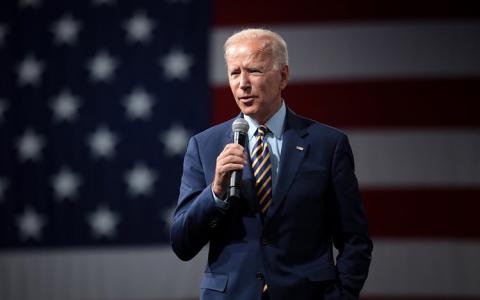
Moody’s Analytics chief economist Mark Zandi said Monday that President Biden’s massive infrastructure plan could actually slow the economy down in the short term—here’s why.
Key Facts
Zandi says the slowdown, which he describes as “marginal,” will be caused by the structure of Biden’s plan: the corporate tax hikes that will offset the plan’s price tag will take effect right away, but the lift from all the new infrastructure spending won’t happen until later on.
That’s in line with analysis from Goldman Sachs, which said last month that the spending from Biden’s infrastructure push will “likely take a few years to ramp up.”
If the plan passes, Zandi says he expects the slowdown will hit in early 2022—with GDP growth dropping from 7.2% in 2021 to 3.9% in 2022 to 2.3% in 2023—but notes that he expects the situation to turn around very quickly.
Biden’s plan will also “result in substantially more jobs” in the middle of the decade, Zandi says.
Crucial Quote
Despite the prospects of slower growth for a short time next year, Zandi is also bullish on the economy right now. “I can’t remember a time when I’ve been so sure of the economy’s near-term prospects. It is going to be rip-roaring,” he wrote in a Monday note. “For the next six months, probably for the next year, and perhaps even well into next year, real GDP growth and job gains will boom, and unemployment will quickly decline.”
Key Background
Biden unveiled his next major legislative effort, the $2+ trillion American Jobs Plan, last week on the heels of a major victory in the passage of the $1.9 trillion American Rescue Plan. Biden’s jobs proposal includes $621 billion for transportation infrastructure like roads and bridges, with $174 billion of that set aside for the electric vehicle market, $111 billion for clean drinking water, and $100 billion each for expanding broadband and for power infrastructure like the electric grid. There’s also $213 billion for affordable housing and $100 billion for workforce development. All that spending would happen over eight years and be financed with tax hikes—including a bump in the corporate rate from 21% to 28%—over 15 years.
Big Numbers
917,000. That’s how many jobs the U.S. economy added in March, according to data released by the Labor Department last week, with similarly strong numbers expected in the months ahead as vaccines continue to roll out and states lift restrictions on businesses. The Georgetown University’s Center on Education and the Workforce has estimated that Biden’s infrastructure plan will create or save 15 million jobs over a decade.
What We Don’t Know
When Biden’s infrastructure bill will pass, and how closely the final version will resemble his proposals after lawmakers push for changes. Zandi says he expects a package “similar in spirit and size” to what the White House has proposed to become law through the budget reconciliation process later this year. House Speaker Nancy Pelosi (D-Calif.) has said her goal is for that chamber to pass the bill by July 4, before Congress’s August recess. Analysts from UBS expect the final package to pass along a party line vote in October.
This article originally appeared on Forbes.



